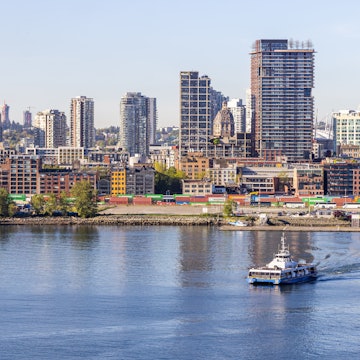
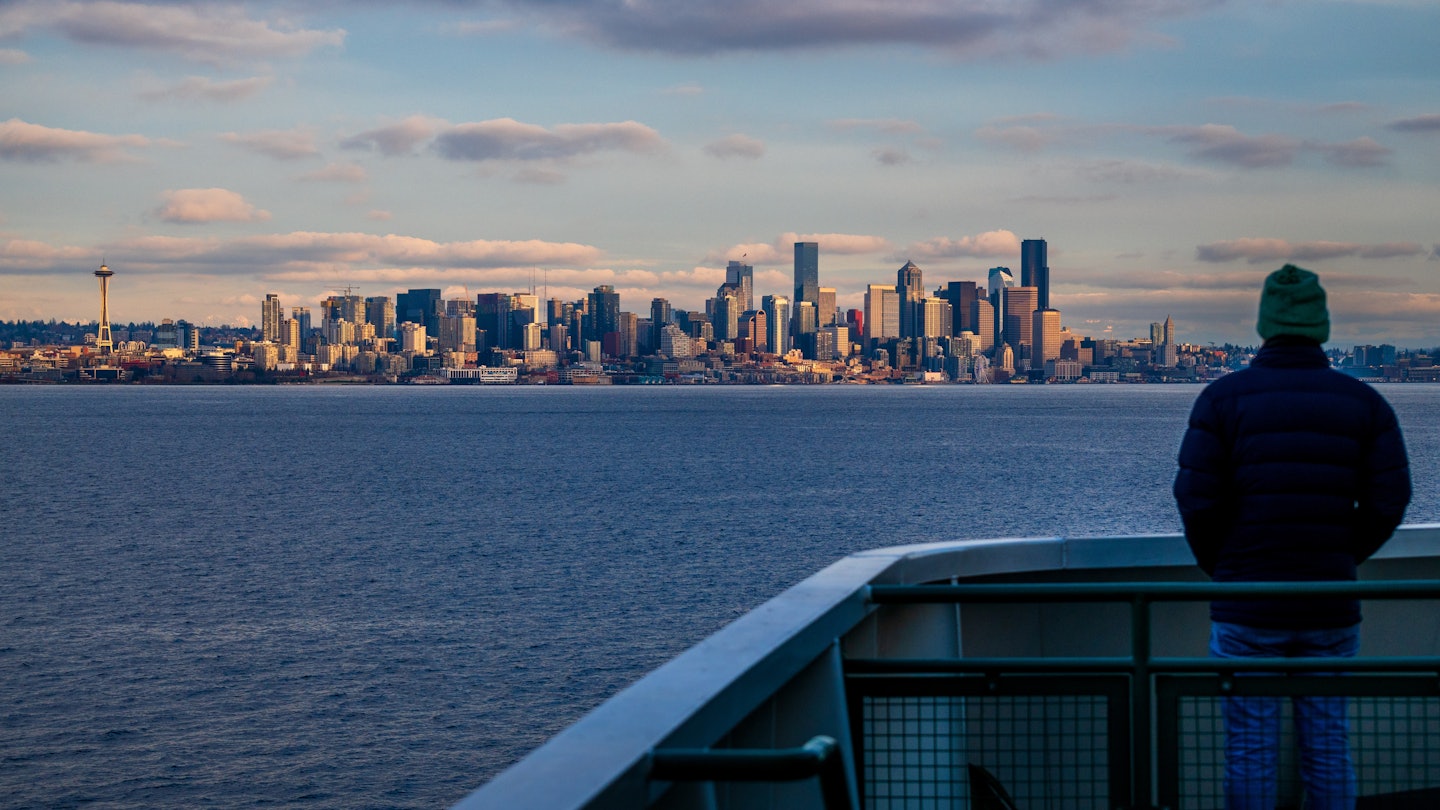
A ferry in the waters off of Seattle. Edmund Lowe Photography/Shutterstock
Considering its size, getting around Seattle without a car is surprisingly easy. Most of the neighborhoods on the tourist radar are walkable, although a few, like Capitol Hill and Queen Anne, involve some serious uphill climbs. Getting from one neighborhood to another is generally easy, too, thanks to an extensive and affordable public transportation network.
Of course, getting around by car does allow you to explore the city at your own pace, and there’s less risk of getting your hems soaked in Seattle’s famous rain. But driving comes with drawbacks. To help you decide the best mode of transport, here’s everything you need to know about getting around Seattle.
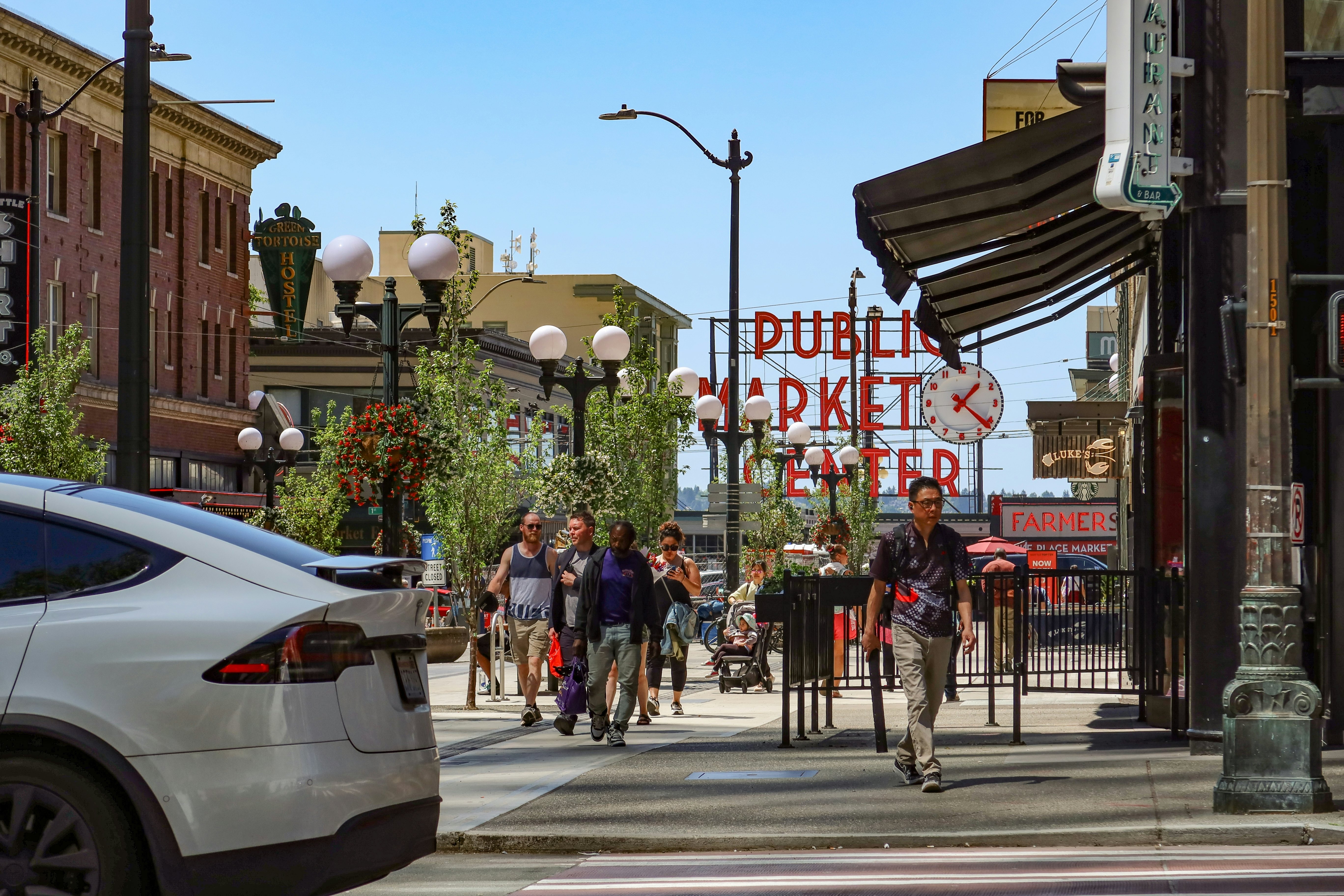
Driving in Seattle is for the brave
Seattle's traffic is disproportionately heavy and chaotic for a city of its size; parking is scarce and expensive. Add to that the city’s cobbled-together mishmash of skewed grids, the hilly terrain, the inexplicable left-lane freeway exits and the preponderance of one-way streets, and it’s easy to see why driving can be a challenge. And we haven’t even mentioned the address system yet.
If you're feeling brave, rental agencies like Avis, Budget, Enterprise and Hertz are in the Sea-Tac airport. The city also offers share-car services, including Zipcar and GIG. Rules for gas and mileage charges vary, so be sure to read the fine print.
Taxis and rideshares can be pricey (but at least you're not driving)
If you're crunched for time outside public transit hours – or don’t know how to get from Seattle airport to downtown with all your luggage in tow – it can be helpful to grab a taxi cab or rideshare service like Uber and Lyft.
You can try hailing a cab from the street, but it’s a safer bet to call and order one. All Seattle taxi-cabs operate at the same rate, set by King County, which is US$2.60 at meter drop, then US$2.70 per mile. Reliable taxi services include Seattle Orange Cab, Seattle Yellow Cab and STITA Taxi.
There may be an additional charge for extra passengers and baggage, and some companies have flat rates for trips from the central business district to the airport. Expect to pay between around US$40 and US$55 for a trip between downtown and the airport.

Buses are a budget-friendly, around-the-clock option
If you’re on a budget, buses are ideal. Most are operated by King County Metro Transit, part of the King County Department of Transportation. Go to their website for route schedules and maps, plus a trip planner.
To make things simple, all single ride bus fares within Seattle city limits are a flat US$2.25 for adults, while a regional day pass costs US$6. You can pay in cash, with a Metro transfer or ticket, or with an ORCA card.
Have the exact fare as drivers don’t carry cash: your fare goes into a fare box. A transfer ticket is valid for three hours from the time of purchase. Most buses can carry two to three bikes.
There are six RapidRide bus routes (A to F). RapidRide buses have limited stops, so they're faster and more frequent than regular buses, arriving every 10 minutes.
Line C connects downtown to West Seattle, and Line D connects downtown to Ballard. Payment is the same as for regular Metro buses, and there may be fare inspections, so hold on to your ticket.
Sound Transit operates regional buses that go beyond Seattle’s city limits and are a good option if you need to get to, say, Tacoma or Everett. Since stops are limited, they’re not very practical for getting around Seattle.
Catching the bus after hours
If you need public transportation in Seattle after a night out, the city runs Night Owl buses between midnight and 5am on some of the most popular routes.
Between 8pm and 5am, there's an additional Night Stop service in some areas. You can ask the driver to drop you off at any point along the route – even if it isn't an official bus stop – to cut down on the distance you need to walk. However, the driver will make this stop at their discretion.
If you’re under 18, you can now travel for free
Washington Governor Jay Inslee signed the Move Ahead WA package, aimed at improving public transportation and infrastructure in Washington. One of the provisions in this legislation is free transit for individuals 18 and younger. This means that kids and teens (with a Youth Orca Card or middle school or high school student ID) can ride Seattle’s buses, trains, streetcar and water taxis for free until their 19th birthday.
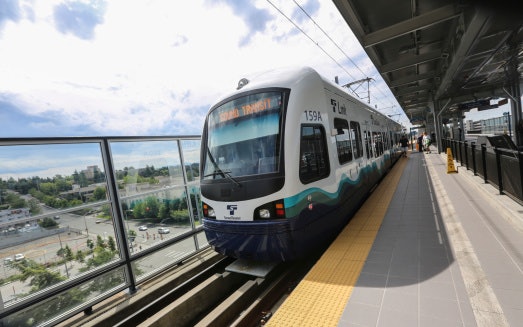
Beat traffic with Link light rail
There are three non-connected Link light rail lines that run throughout the city and its surrounding areas.
One of them operates within Seattle running from Angle Lake via the Sea-Tac airport and Westlake Station downtown to the Northgate neighborhood, while the other two provide access throughout Bellevue and Tacoma. It's faster than the bus (or car) and runs every 8 to 15 minutes (depending on the time of day) between 5am and 1am, with reduced service (from 6am to midnight only) on Sundays and holidays.
Fares run from US$2 to US$6 depending on the pass you're eligible for (senior, low-fare, adult and youth are all options).
Take a train to Everett or Tacoma
Sound Transit operates “Sounder” trains connecting Seattle to its sister cities Tacoma to the south and Everett to the north. Trains are new and clean, and schedules run smoothly. Fares also depend on how far you travel but are between US$3.25 and US$5.75 for adults.
Transit takes one to two hours. Use connecting bus routes to get all the way to Washington’s capital city, Olympia.
Experience Seattle history on the Monorail
The Monorail was originally intended as public transportation but has become a tourist favorite. It only goes one mile, from Westlake Center downtown straight to Seattle Center – and the Space Needle – and back every 10 minutes, from 7:30am to 11pm on weekdays and from 8:30am to 11pm on Saturdays and Sundays, with extended hours for arena events and Kraken (Seattle’s professional hockey team) games.
It’s a fun way to get between the two most touristed areas of the city. A one-eay ticket on the Monorail costs US$4 for adults. Pay by card or use your ORCA card, as cash isn't accepted.
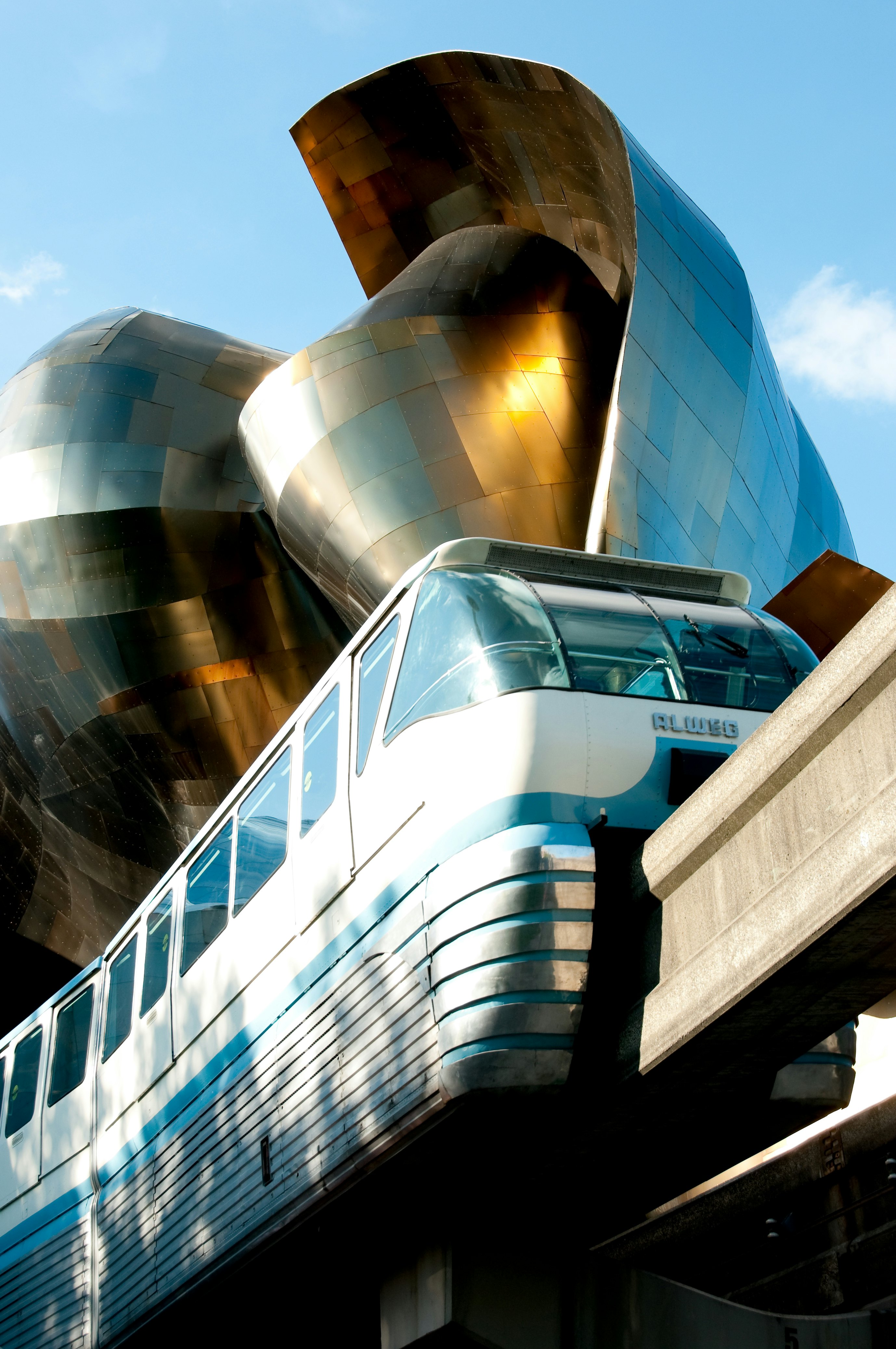
Hop on a Seattle Streetcar
The revival of the Seattle Streetcar was initiated in 2007 with the opening of the 2.6-mile (4.18km) South Lake Union line that runs between Westlake Center and Lake Union. There are nine stops, and fares are US$2.25 for adults. You can also get day passes that allow an unlimited number of rides on that day for US$6.
A second 10-stop line opened in 2016, running from Pioneer Square via the International District and First Hill to Capitol Hill. The First Hill line has 10 stops. On weekdays, streetcars run from 5am to 10:30pm, passing by every 15 minutes or so (every 12 minutes during rush hour).
Roll-out plans for future streetcar lines are in the offing, with links earmarked for Fremont, Ballard and the U District.
See Puget Sound from a ferry or water taxi
The most useful inter-neighborhood boat route is the water taxi, which connects the downtown waterfront (Pier 50) with West Seattle’s Seacrest Park and the Alki neighborhood. The water taxi is for foot and bicycle passengers only.
It runs hourly every day in the summer but only on weekdays in the winter. Adult fares start at $US5 for the 10-minute crossing. Bikes can be brought on board for free.
A second water taxi route takes visitors to nearby Vashon Island. The crossing takes about 22 minutes, and a ticket costs US$6.75 for adults. Bus service on the island is limited, and the hills are unforgiving to cyclists.
The much larger Washington State Ferries serve foot, bicycle, and car traffic. The Pier 50 terminal offers routes to Bainbridge Island and Bremerton, which both make for excellent day trips from Seattle. Be sure to pick up a route schedule; you don’t want to miss the last ferry back to the city.
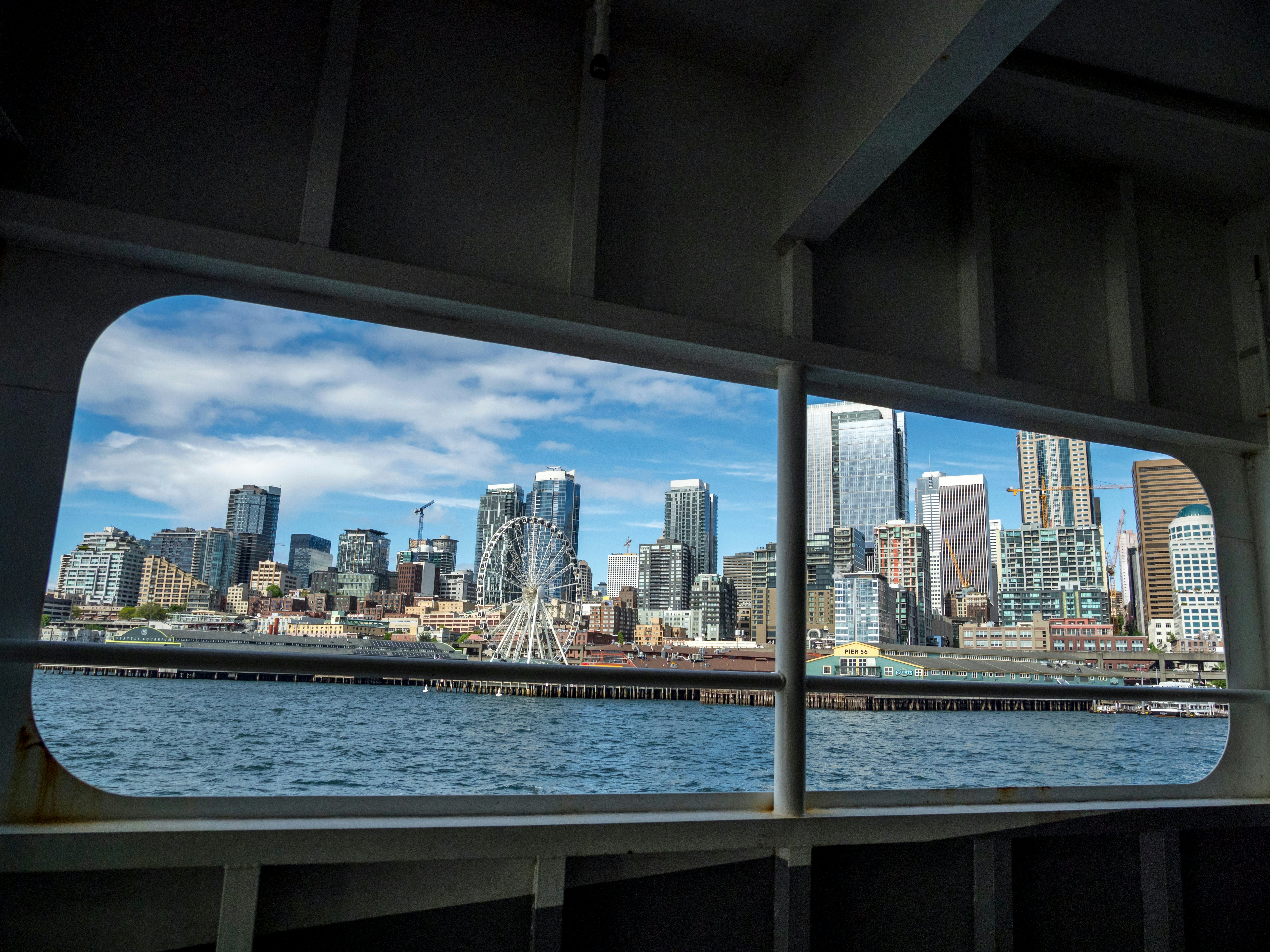
Test your cycling skills on Seattle’s hills
Winter might not be the best time for cycling, but you will spot Seattle locals doing it even in the rainy dark.
If you can brave the wet, pick up a copy of the Seattle Bicycling Guide Map. The best non-motor traffic route is the scenic Burke-Gilman Trail, which passes through the northern neighborhoods of the U District, Wallingford, Fremont and Ballard.
Other handy bike paths are the Ship Canal Trail on the north side of Queen Anne, Myrtle Edwards Park, Green Lake Park and the Cheshiahud Loop around Lake Union.
While Seattle and all of King County repealed the law that required that cyclists wear helmets in 2022, it’s still recommended that you wear one for your own safety.
Seattle also has bike-sharing options operated by Lime and Veo.
Explore Seattle on foot
The monorail was highly revolutionary in 1962, and the ferries are a wonderful way to get some salt in your hair, but on a rare clear day, you can’t beat the visceral, oxygen-drinking act of walking. Besides, it is entirely free!
Because most of Seattle’s through traffic is funneled along one of two main arteries – I-5 and SR-99 (also called Aurora, Alaska Way or Pacific Highway, depending on where you are) – the central streets aren’t as manic as you’d imagine.
In Belltown and Pioneer Square, your worst hassle might be sports fans hanging out by the nearby stadiums. Downtown, the hills might slow your progress slightly, while on the waterfront you’ll need to watch out for the seagulls – and fellow tourists.
Seattle’s most walkable neighborhoods are leafy Capitol Hill and Queen Anne. If you’re really adventurous, ditch the car/bus/train and explore the U District, Wallingford, Fremont and Ballard by taking a walk or bike ride on that entertaining people-watching bonanza, the Burke-Gilman Trail.
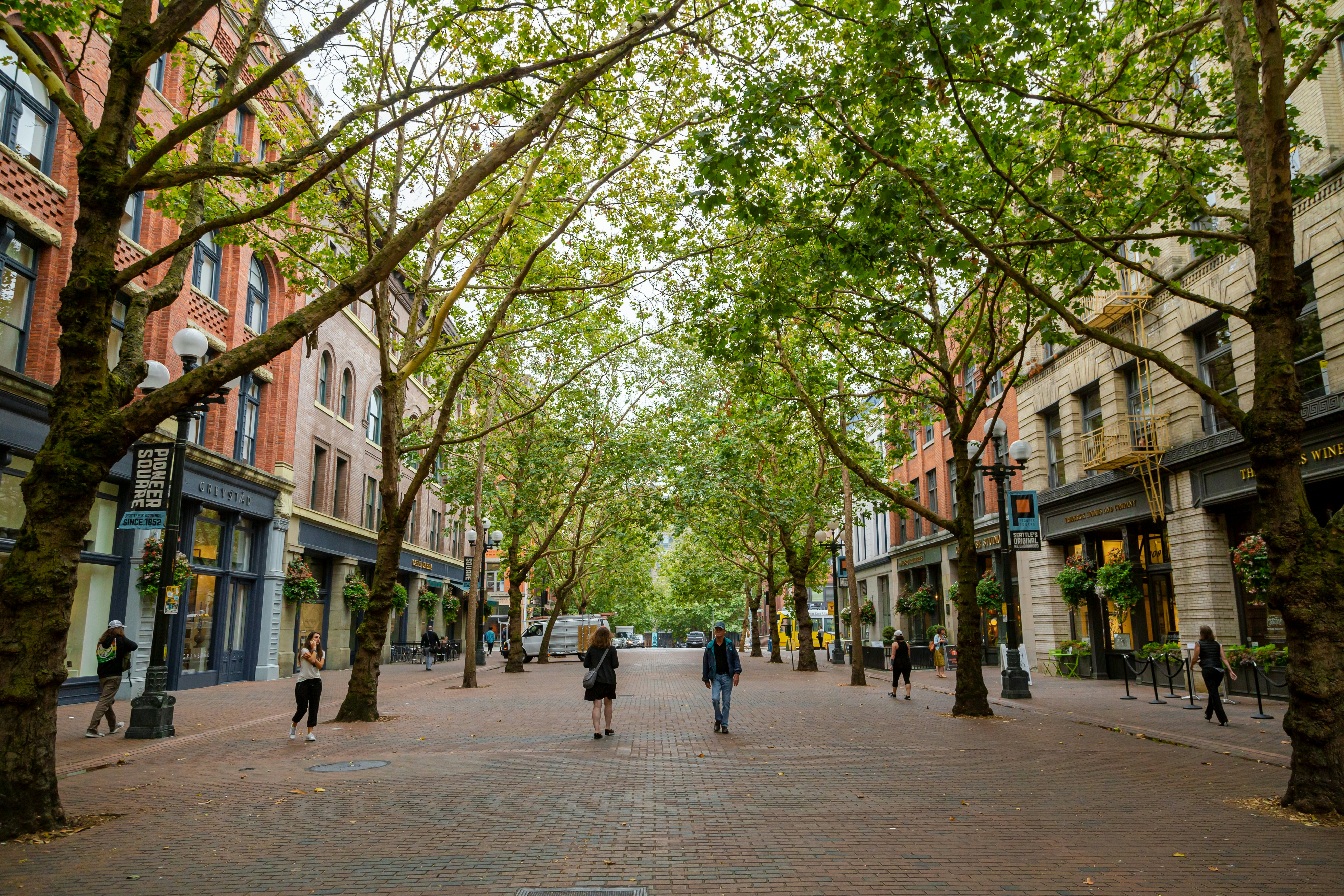
Get anywhere with an ORCA card
Seattle offers a unified transit card that works across services, including Sounder trains, King County Metro buses, Link light rail, Seattle Streetcar, Seattle Monorail, water taxis and Washington State Ferries.
ORCA cards operate like a digital purse: you input money in your account using a credit or debit card, then tap on and off transit to access your funds. Some services, like the water taxi, offer discounted rates for ORCA card users.
You can order an ORCA card online or buy one at any ORCA refill kiosk in the Link Lightrail transit tunnels or at certain retailers. You can also refill the card at those kiosks or online. If you're going to be traveling a lot, you can purchase a regional day pass or even a monthly pass.
Accessible transportation in Seattle
All public buildings (including hotels, restaurants, theaters and museums) are required by law to provide wheelchair access and to have appropriate restroom facilities available. Telephone companies provide relay operators for the hearing impaired. Many banks provide ATM instructions in Braille. Dropped curbs are standard at intersections throughout the city.
Most of King County Metro’s buses are equipped with wheelchair lifts. Timetables marked with an “L” indicate wheelchair accessibility. There will be signage at the bus stop to indicate whether the lift or ramp can be used here.
Once you’re on the bus, be sure to let the driver know if you need your stop to be called.
Service animals are allowed on most forms of public transport in Seattle, but emotional support animals may be classified as pets, which means some restrictions may apply. Passengers with disabilities qualify for a reduced fare but first need to contact King County Metro for a permit.
Most large private and chain hotels have suites for guests with disabilities. Many car rental agencies offer hand-controlled models at no extra charge, but you'll need to book ahead with at least a few days' notice.
All major airlines, Greyhound buses and Amtrak trains allow service animals to accompany passengers and often sell two-for-one packages for passengers who require carers.
The Society for Accessible Travel & Hospitality (SATH) provides info for travelers with disabilities, and Easter Seals of Washington provides technology assistance, workplace services and camps for individuals with disabilities and special needs. For more, check out Lonely Planet’s Accessible Travel Guides.
















